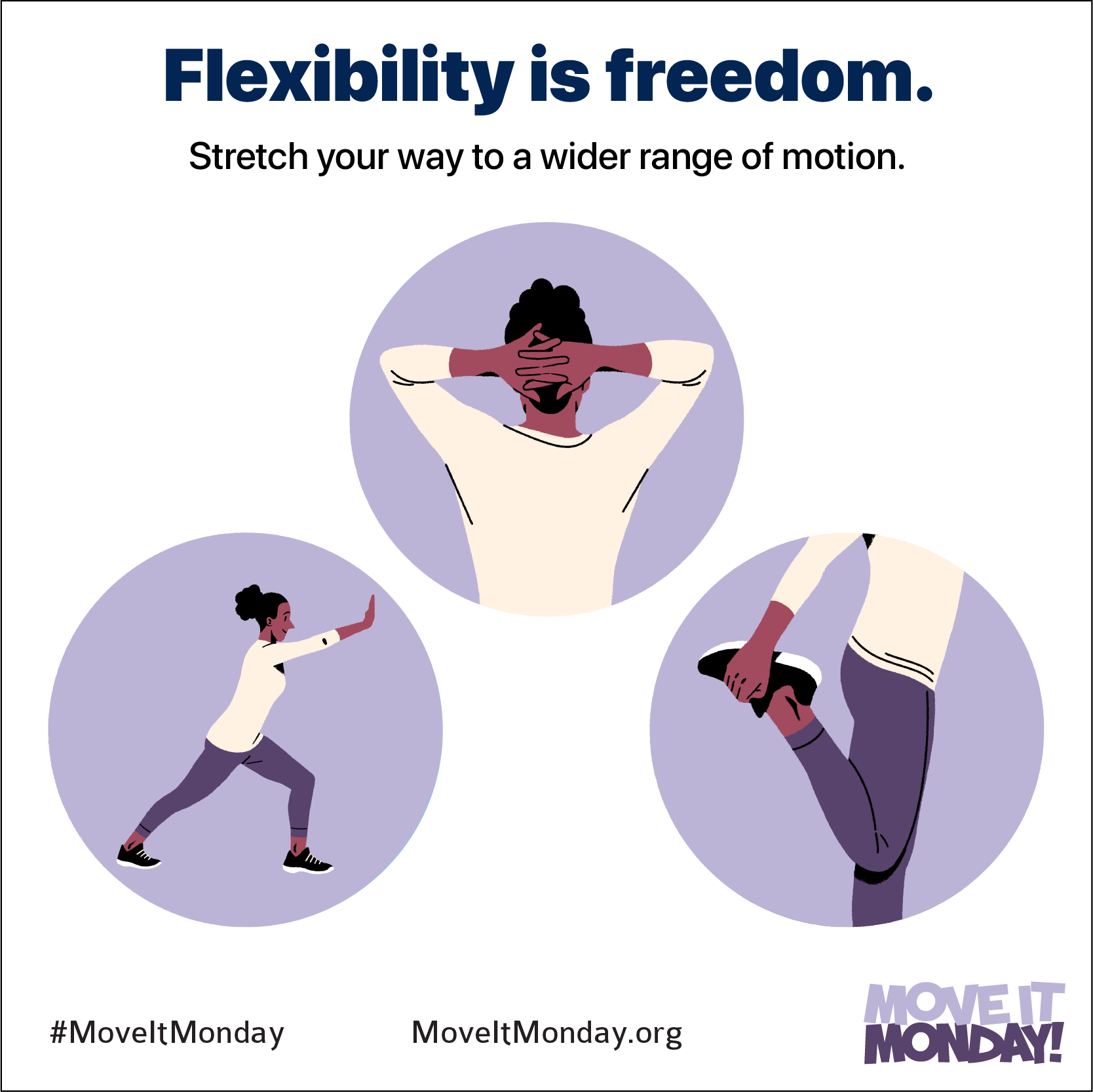Stretch Your Way to Better Flexibility
Flexibility, along with strength, endurance, and balance, make up the four key elements of physical fitness; but flexibility is unique in the way that it influences all other forms of exercise. Being more flexible means lower risk of injury and pain, more freedom of motion, improved posture, and better body control and stability. And most importantly, better flexibility makes every-day activities easier, from getting out of bed to walking up stairs to reaching a high cabinet.
Yet despite its importance, rarely do workout routines emphasize this critical component of overall fitness. That’s why we want you to dedicate this Monday to stretching for flexibility.
Stretching seems simple — and it is — but there are some general guidelines to follow to help you avoid injury. If flexibility is the focus of your workout, warm up beforehand with a few minutes of brisk walking. When starting a stretch, always moves gently and smoothly into position, stopping when you feel any sort of sharp pain. Initially, you’ll want to hold stretches for between 10 and 20 seconds, but as you get more comfortable, you can extend the hold time for as long as 30 seconds. Repeat each stretch between 3 to 5 times, and do your best to take slow and measured breaths.
To get you started, we’ve included a list of easy-to-execute movements that will introduce you to the concept of stretching for flexibility.
Calf Stretch:
Stand facing a wall a bit more than an arm’s length away. Put one foot forward with a bent knee and the other one back with a straight knee. Toes should be pointing directly forward. Using your arms to brace yourself against the wall, lean in until you feel the stretch in the calf muscle of your back leg. Try to keep both feet flat, and hold it for 20 to 30 seconds on each side.
Chest and Shoulder Stretch:
This stretch can be done from either a sitting or standing position. Start by interlocking your fingers behind your head. Push your elbows back while squeezing with your upper back until you feel a stretch in your chest near your underarms. Hold for 20–30 seconds. You can move your hands to the top of your head — or a few inches above your head — to affect different parts of your shoulders and chest.
Standing Quad Stretch
Stand behind a chair with your legs about shoulder-width apart. Put one hand on the chair for balance. On the opposite side, lift your foot behind you and grab it with your free hand, keeping your bent knee pointing straight to the floor. Avoid bending forward, and try not to lock the knee of your standing leg. Pull gently on the leg until you feel the thigh stretch. Hold it for 10 to 30 seconds.
